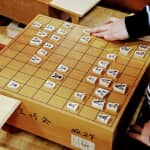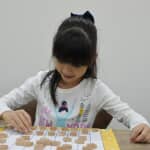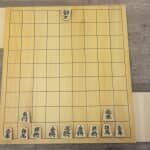Shogi 1 October 2017
Shogi Rules – How to Play Shogi – : Step 3-1 Pieces in the Form of Two Letters
A professional Shogi player invites you to the world of Shogi along with traditional Japanese culture. In this series, there are three steps and each step has around 10 lessons. Even though you don’t know about Shogi, through these three steps you will get knowledge to enjoy it.
Step 3-1: Pieces in the Form of Two Letters
Finally, Step 3 starts. In Step 1 and 2, you learned basic rules and how to move each piece. In this step, you will learn basic techniques to enjoy a game more.
For the first day, I’m going to explain about letters on pieces. Do your pieces have one letter or two letters on their faces? If you are using pieces for beginners which have some indication marks on them, probably they might have one letter.
By the way, through this series, we use pieces with one letter, since one letter is larger in size than two letters. Also one letter is easier to view and understand. I think the same reason applies to the TV Shogi programs and they also use pieces with one letter for the sake of viewers.
However, in the real game situations, generally two-lettered pieces are used, including Shogi tournaments and Shogi classes. The back faces of two-lettered pieces, which are used when they get a promotion, usually have the cursive style of the character. The below picture shows both the front face and the back face of two-lettered pieces.
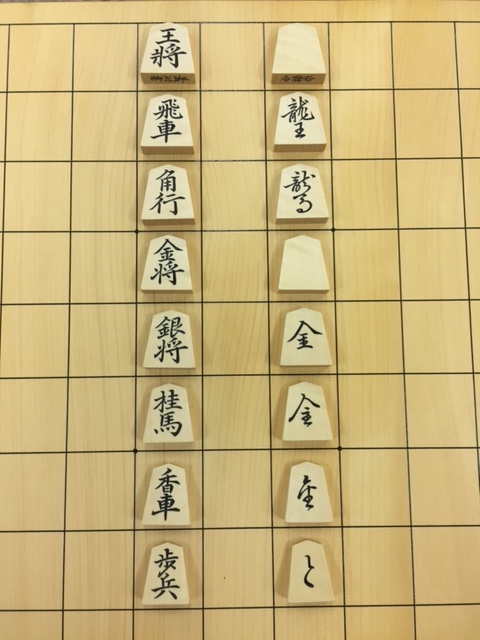
Gin (Silver), Kei (Knight), and Kyo (Lance) will move in the same way as Kin (Gold) does after their promotions. Regarding pieces that are used during real games, their back faces have cursive style of Kin (Gold), as described below. Can you see the differences among them?
Nari-Kyo (Promoted Lance) has a longer style than others, indicating its strait moves. Look carefully at the difference in the shapes of letters shown below, as you may notice shapes get crushed more in the order of Gin (Silver), Kei (Knight), and Kyo (Lance).
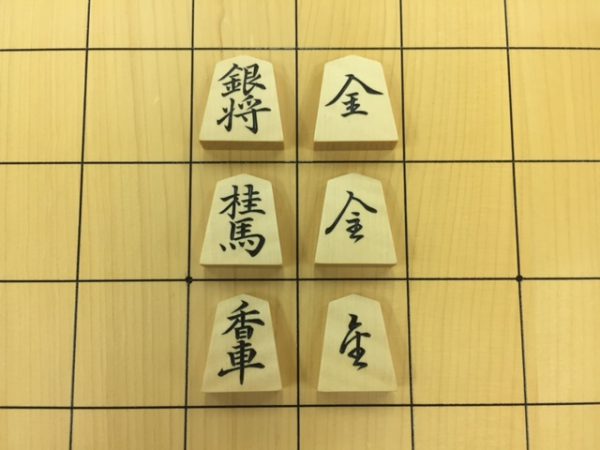
As I mentioned above, in the Shogi tournaments, pieces with two letters are used. You need to be familiar with the cursive style letters engraved on back faces. You may find several pieces confusing, such as a pair of promoted pieces of Hisha (Rook) and Kaku (Bishop), or a group of promoted pieces of Gin (Silver), Kei (Knight) and Kyo (Lance). I would recommend trying to be familiar with them before you play a real game.
Incidentally, I was asked from a student why prompted Fu (Prawn) becomes To-Kin, or “と”. This is not easy question to answer, and there are some theories for this. Fu (Prawn) will gain the same moves of Kin (Gold), like Gin(Silver), Kei (Knight) and Kyo (Lance). Originally, Fu’s promoted piece had the cursive style of Kin (Gold) that is the same as that of Gin (Silver), Kei (Knight), and Kyo (Lance). At some point, some piece craftsmen used sound similar and more simple Chinese character, “今”. While the substitute letter was written over again and again, it changed its shape from “今” to “と”. But, it’s not sure. Please find out the different theory, if you would like.

After Today’s Lesson
Cursive style letters are quite difficult even for adults. My daughters have Shogi equipment for beginners, so our pieces have one letter.
Before one of my daughters participated in a tournament, she tried to remember cursive style letters of promoted pieces exclusively. As she had not been able to read the Chines characters, it didn’t matter whether a pice has cursive style letters or not cursive style ones. Now she can surely differentiate which promoted piece comes from which original one, probably…hopefully!
